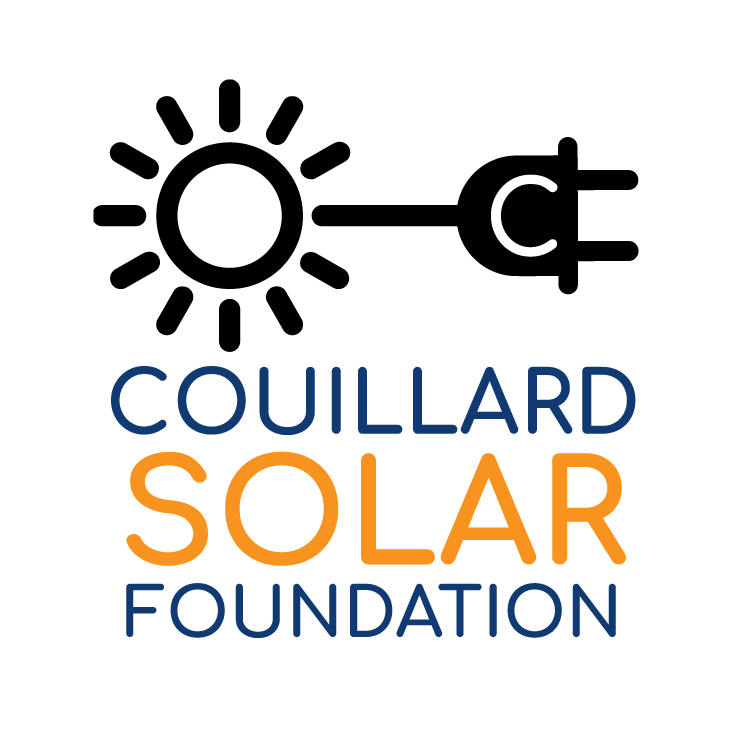Ground Vs. Roof Mounted Solar Arrays
The Couillard Solar Foundation offers bifacial solar panels in all of our grant programs. We also sell them to customers who are looking for the best solar energy system for their project. We believe our panels are always the best choice, but we know that our customers have to consider many options when assessing bifacial solar panels for their particular project. Currently our products are designed to work best in ground mount arrays, due to their high power output and lead length. However, with some design modifications, they can be used in roof mount applications, particularly in commercial or flat roof arrays.Here are some key factors to consider when selecting a ground mount array.
Here are some key factors when considering a roof and ground mount display.


Cost
Ground mount arrays used to cost more to install, due to additional materials, time and labor. However, now that most states have adopted the 2017 NEC code requiring rapid shutdown devices on roof mounts, the price of a ground mounted array is more in line with that of a roof mounted array. When using bifacial solar panels, a well-placed ground mounted array will produce more energy compared to the same size mono-facial array giving the owner a faster return on investment and offsetting the extra cost of installation.
Also, if a customer needs to replace or reinforce their roof before installing a roof mounted array, they may find the much less prohibitive additional cost of a ground mounted array more appealing.
Area

Obviously, those with large yards can install a more extensive ground mounted system compared to a rooftop mounted system. Rural homes or businesses, such as farms, are excellent candidates for ground mounted arrays. Because bifacial solar panels are more efficient, fewer panels are needed to produce the same amount of energy, making it possible for the array to have a smaller footprint.
Also, urban businesses, municipalities and other organizations with more extensive grounds may want to dedicate a portion of those grounds to a solar array as a way to show their committment to renewable energy. Making the array more visible allows them to communicate to their community that they are supporting green initiatives and encourages others to do so as well.
For roof mounted solar arrays, roof construction type, angle, and orientation can impact the installation and performance of the array. Shade on the roof cuts into the overall production capability of the solar array. Not all homes are suitable for roof mounted arrays, but with bifacial solar panels, homeowners can see 5% more energy production than they would from a similarly sized mono-facial array, especially if it’s installed in such a way as to take advantage of reflected light (albedo).
Flat roofs, like those found on many commercial buildings, are an even better candidate for an array using bifacial solar panels. By mounting the panels at a higher angle, and further apart to reduce self-shading, a roof mounted array can perform as well as a ground mounted array equipped with bifacial solar panels, even in low light situations.
The Couillard Solar Foundation’s bifacial solar panels are also certified to withstand a high wind load (50 pounds per square foot (psf)) and snow load (112 psf). In addition, when bifacial solar panels are installed at a higher angle, power produced by albedo hitting the back of the panel warms the panel. The warmth of the power generated combined with the higher angle helps the snow to melt and slide off the surface of the panels faster, improving recovery time after a snowfall.
Appearance

Ground mounted solar arrays are more visible than a rooftop mounted installation, especially when placed in a small yard or urban environment. Some communities, homeowner’s associations or building management groups may have policies against visible solar panel installations. Many states however, have laws protecting a homeowner’s access to solar.
Bifacial solar panels can be quite effective when placed on gazebos or other free-standing shelters. Structures like these can take advantage of the albedo reflected from grass, stone or concrete, while also providing shade, combining beauty with utility. Bifacial solar panels have a “clean” appearance. The back of the solar panel looks similar to the front and a small percentage of light shines through, creating an attractive translucent appearance.
The Couillard Solar Foundation is developing a solar canopy (prototype seen here) that marries beautiful functionality with fast, easy installation. The canopy can be placed on many sub-structure types, including pergolas, pavilions or carports. (Please note: CSF does not sell the sub-structure, only the canopy.) Contact us for more information if you would like to learn more about this unique product.
Care and Maintenance
While solar energy systems don’t require much upkeep, periodic cleaning or preventative maintenance may be needed. With ground mounted solar arrays, maintenance and repairs are simpler and more cost-effective than rooftop mounted ones due to easier access to the array. Roof mounted panels often require ladders or rope systems for access, making maintenance more difficult for a homeowner. Hiring professionals to clean or perform routine maintenance on a roof mounted array could add to the overall lifetime cost of the system.
